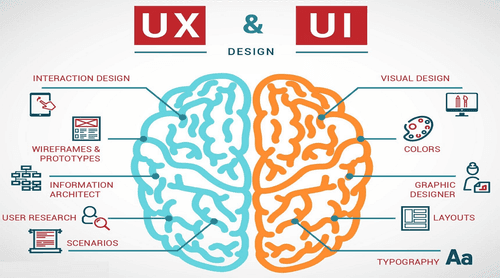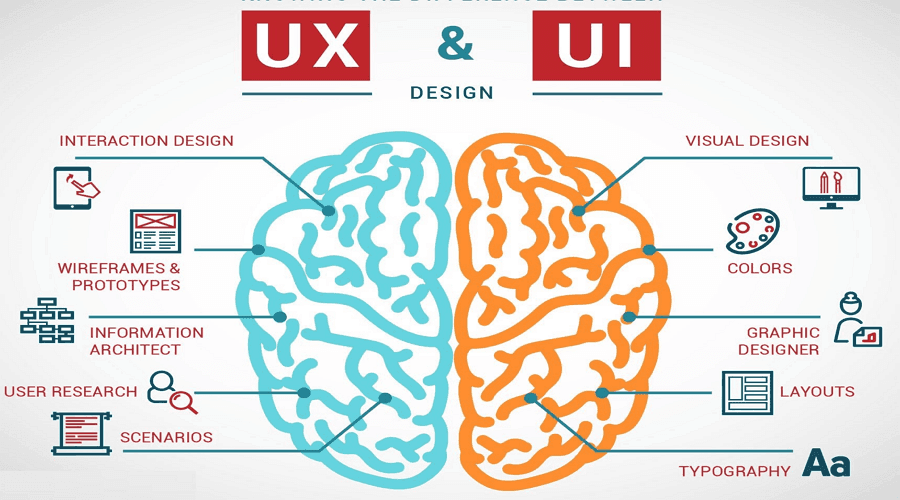Explore the World's Best Ideas
Join today and uncover 100+ curated journeys from 50+ topics. Unlock access to our mobile app with extensive features.
1. UX and UI are not alike
Using the term User Experience (UX) and User Interface (UI) interchangeably is a common mistake. However, it’s important to distinguish the two. It might be a surprise to some but UI is actually a part of UX.
Basically, User Experience design focuses on functionality, usability, simplicity and clarity of the product/service. In short, if users are able to solve a particular problem within the design and how easy/hard it is. User Interface, on the other hand, is about the visual experience of the product/service. It focuses on the look and feel of the product/service.
69
548 reads
2. You are not the target audience
Designers, entrepreneurs and innovators often assume that the potential users of their product are like them. That’s a big mistake. The psychological term for this tendency is a false-consensus effect. Basically, people assume that others share the same beliefs and will behave similarly in a given context as they do. Avoid that, many others have done that before you and it didn’t end up well for them. Whatever product you are making there is a high chance that the future users are typically not like yourself. Most probably, they have different backgrounds, mindsets or goals.
70
361 reads
3. UX should be a mindset, not a step in the procedure
The wheels need to keep turning and you have a deadline to meet. This is a common justification for why UX is not prioritized. It’s also a common way of spotting whether your organisation has understood what UX really is. User Experience design is not a process that your team has to adhere to, it’s a mindset. You should always keep a superior user experience in mind when you are designing and developing your product. Therefore, it is advisable to consult an experienced UI/UX design agency .
60
290 reads
4. UI is like a joke – if you have to explain it, it’s not good enough
You remember the time you dropped a joke and nobody got it, so you had to explain it? Yeah, it wasn’t that funny after all. Same goes for UI, if you have to explain the design and the reasons why you made the choices that led to that design, then it’s not good enough.
67
350 reads
5. All pages need to be accessible with a maximum of 3 clicks
Well, that’s just partially true. The idea that every distant corner of your product should be reachable within a few clicks is just plain wrong. Not all the information possible needs to be the first thing the users see. A great example is the “about company” button. For those interested in the history behind the company, they can dive into that and dig around. In a world where humans are scoring a record low on the attention span chart, you need to put all your focus into what brings value to your users, the vital information.
66
294 reads
6. Adjust design for short attention spans
Speaking of attention spans, you need to be crisp when serving your users, don’t overwhelm them with information. An attention span is defined as the amount of time someone concentrates on a task without becoming distracted. In 2015 Microsoft conducted a study that revealed that the average human attention span has declined from 12 seconds to 8 seconds . That’s some scary stuff, we basically have a shorter attention span than a goldfish. Yes, a freaking goldfish. So when you are designing your product, ask yourself this: “Would a goldfish be able to use this?” If not, back to the board.
66
261 reads
7. Leave your ego at the door
We love this one. Especially founders, CEOs and chairmen have built careers by having strong opinions about virtually anything. By having strong opinions, most of which were correct, otherwise, they wouldn’t be able to enjoy their level of success. This fact builds ego. But when it comes to creating an awesome experience for your users, ego has no place in that process. So before you walk into a work session or an individual testing session together with your colleagues, leave your ego at the door. That’s a very useful inspirational quote.
59
245 reads
8. Use real content when designing
Don’t use Lorem Ipsum and dummy placeholders all over the place when you demo a new design. It is hard to come by a product that is not based around original content, whether that’s text, images, or videos. It’s not far off to say that design is an enhancement to the content. Yet many make the mistake of putting Lorem Ipsum all over their design, not taking content into account during the design phase.
61
248 reads
9. KISS – Keeping It Simple, Stupid
Simplicity is the king and consistency is the queen. In the context of digital products, simplicity means that’s it’s easy to understand and interact with your product. Your users shouldn’t need to read instructions to understand how to use the app or have a sitemap to be able to navigate through it. It’s part of your job to make things clear and subtly guide them from where they are to where they need to go.
68
240 reads
10. Prototype
Prototyping allows you to test your hypothesis before spending time with an engineering or development team building the actual product. Designers can use different design techniques for it. One useful technique is called rapid prototyping. It’s a popular way of quickly creating the future state of a product, be it a website or an app, and validating it with a group of users.
62
255 reads
IDEAS CURATED BY
Alexandra Tudorache's ideas are part of this journey:
Learn more about product with this collection
Essential product management skills
How to work effectively with cross-functional teams
How to identify and prioritize customer needs
Related collections
Similar ideas
16 ideas
15 Inspirational UX Design Quotes
careerfoundry.com
5 ideas
Five Reasons to Prioritize Spend on Website UX Design
marketingprofs.com
5 ideas
Read & Learn
20x Faster
without
deepstash
with
deepstash
with
deepstash
Personalized microlearning
—
100+ Learning Journeys
—
Access to 200,000+ ideas
—
Access to the mobile app
—
Unlimited idea saving
—
—
Unlimited history
—
—
Unlimited listening to ideas
—
—
Downloading & offline access
—
—
Supercharge your mind with one idea per day
Enter your email and spend 1 minute every day to learn something new.
I agree to receive email updates



